Just because the headlines about hunger in Africa aren't as prominent doesn't mean the crisis has lessened, more likely it's our tolerance for hearing about it that has.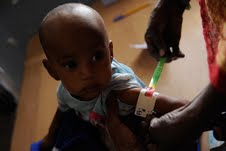 In fact the sobering truth is that hunger and malnutrition are worse than ever. Consider these latest numbers:
In fact the sobering truth is that hunger and malnutrition are worse than ever. Consider these latest numbers:
In Chad over two million people are in need of food and more than a hundred thousand children between the ages of 6 months and 5 years will need treatment for severe malnutrition which can kill, or do irreparable physical and mental damage.
There has been a drought in Chad's Sahel region since 2007. Last year, the rainfall was 52% less than in 2008. To survive people were forced to sell their cattle at give-away prices to buy food while other animals died.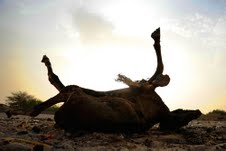 Feeling overwhelmed? Helpless? Imagine what the doctors working with UNICEF, one of the only relief agencies now active in that region, must be feeling. In an effort to get the rest of the world to understand the depth of the crisis, they enlisted the help of photojournalist Riccardo Gangale in the hopes that pictures could convey what mere numbers can't. Dr Marzio Babille the UNICEF Reprsentative in Chad, is hoping that these pictures won't cause you to look away or feel helpless. Recently, I had a chance to ask him just how UNICEF combats compassion fatigue and gets donors to ACT?
Feeling overwhelmed? Helpless? Imagine what the doctors working with UNICEF, one of the only relief agencies now active in that region, must be feeling. In an effort to get the rest of the world to understand the depth of the crisis, they enlisted the help of photojournalist Riccardo Gangale in the hopes that pictures could convey what mere numbers can't. Dr Marzio Babille the UNICEF Reprsentative in Chad, is hoping that these pictures won't cause you to look away or feel helpless. Recently, I had a chance to ask him just how UNICEF combats compassion fatigue and gets donors to ACT?
The important thing to note is that we are the first generation who can say famine can be avoided. We have learned lessons from the past. We now know what to do, and we have new methods and mechanism to prevent malnutrition; such as therapeutic foods, outpatient care and the active participation of communities. However, in order to implement this strategy, funding is much needed. As of today, we need an additional $9.5 million USD to effectively respond to emergency nutrition interventions.  What can photos do that a press release or an article can't?Chad is one of the least connected countries in the world but the people should not be left to suffer unseen. A woman called Eta told me that they are living their daily live by day to day, she said, 'if we tell the world what is going on, then maybe they will help'. I certainly hope so because we have a chance here to end famine.
What can photos do that a press release or an article can't?Chad is one of the least connected countries in the world but the people should not be left to suffer unseen. A woman called Eta told me that they are living their daily live by day to day, she said, 'if we tell the world what is going on, then maybe they will help'. I certainly hope so because we have a chance here to end famine. 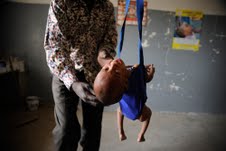 You call this photo essay "A Time to Act" ...why now?This is the period in the Sahel known as the 'hunger gap' when food from the last harvests is running out and new crops are not yet ready. This year it is exceptionally severe and is starting about four months earlier than usual because of a long lasting drought. We are seeing a sharp rise in admissions to the therapeutic feeding centers we have set up. But, I repeat, famine need not happen.
You call this photo essay "A Time to Act" ...why now?This is the period in the Sahel known as the 'hunger gap' when food from the last harvests is running out and new crops are not yet ready. This year it is exceptionally severe and is starting about four months earlier than usual because of a long lasting drought. We are seeing a sharp rise in admissions to the therapeutic feeding centers we have set up. But, I repeat, famine need not happen.  You say that currently, only 10 NGOs and a handful of UN agencies are working in the Sahelian belt of Chad,why are there are so few? The country has little infrastructure, real security concerns in some areas and the education system is weak, leading to a lack of trained nationals in most sectors. These factors make Chad an expensive country for NGO's to operate in which in many instances leads them to rule out Chad as country to operate in. Is raising awareness enough? Raising awareness about this issue is the beginning, but what we really are interested on is in achieving results. Unfortunately in our business we have the hardest bottom line in the world, if we don't have the tools children die.
You say that currently, only 10 NGOs and a handful of UN agencies are working in the Sahelian belt of Chad,why are there are so few? The country has little infrastructure, real security concerns in some areas and the education system is weak, leading to a lack of trained nationals in most sectors. These factors make Chad an expensive country for NGO's to operate in which in many instances leads them to rule out Chad as country to operate in. Is raising awareness enough? Raising awareness about this issue is the beginning, but what we really are interested on is in achieving results. Unfortunately in our business we have the hardest bottom line in the world, if we don't have the tools children die. 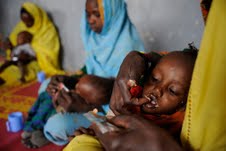 What is one thing each reader can do that would make an effective dent in the crisis? Certainly money helps- but also let your political leaders (Congressman) know that you care about these issues and that action must be taken immediately to avoid unnecessary deaths of children.Wait, haven't we been hearing about hunger in Africa for decades now? What are the long term solutions that you are working on to address malnutrition and food insecurity? Nutrition is UNICEF's area of expertise and we believe that there has been substantial progress over the past decade to improve on the nutritional situation of children. Under- nutrition is the underlying cause of so many children's deaths, and we are heavily engaged with governments to provide appropriate treatment when needed. Africa can feed itself, and if there was more investment in the health sector, much improvement would occur in terms of nutrition and survival rates of children.
What is one thing each reader can do that would make an effective dent in the crisis? Certainly money helps- but also let your political leaders (Congressman) know that you care about these issues and that action must be taken immediately to avoid unnecessary deaths of children.Wait, haven't we been hearing about hunger in Africa for decades now? What are the long term solutions that you are working on to address malnutrition and food insecurity? Nutrition is UNICEF's area of expertise and we believe that there has been substantial progress over the past decade to improve on the nutritional situation of children. Under- nutrition is the underlying cause of so many children's deaths, and we are heavily engaged with governments to provide appropriate treatment when needed. Africa can feed itself, and if there was more investment in the health sector, much improvement would occur in terms of nutrition and survival rates of children.
If we have both the funding and the access to the populations in need, we can quickly turn around this unfortunate situation. We don't do that by turning ourselves away. 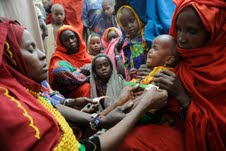 Do these pictures inspire you to help? If so, donate now.
Do these pictures inspire you to help? If so, donate now.